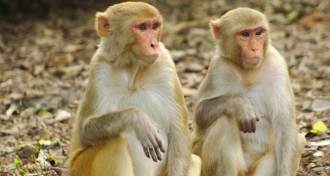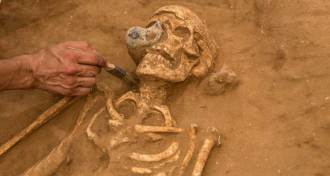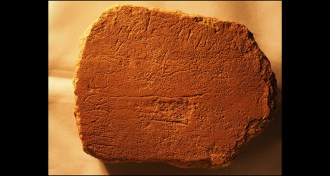News
-
 Chemistry
ChemistryEnzyme forges carbon-silicon bonds with a little human help
A few tweaks to an enzyme help it link carbon to silicon — a match not found in nature.
-
 Life
LifePublic, doctors alike confused about food allergies
Gaps in understanding food allergies cause confusion and make it difficult to prevent, diagnose and treat them.
-
 Earth
EarthWastewater cap could dunk Oklahoma quake risk
Regulation limiting the injection of wastewater into underground wells could return Oklahoma’s earthquake risk to historical background levels within a few years.
-
 Anthropology
AnthropologyBuff upper arms let Lucy climb trees
Australopithecus afarensis’ heavily built arms supported tree climbing, scans of Lucy’s fossils suggest.
By Bruce Bower -
 Life
LifeMitochondria variants battle for cell supremacy
Some mitochondria are more competitive than others, which could complicate treatments for mitochondrial diseases.
-
 Health & Medicine
Health & MedicineLow social status leads to off-kilter immune system
Low social status tips immune system toward inflammation seen in chronic diseases, a monkey study shows.
-
 Archaeology
ArchaeologyAncient cemetery provides peek into Philistines’ lives, health
Burial site offers new look at Israelites’ mysterious enemies.
By Bruce Bower -
 Humans
HumansOldest alphabet identified as Hebrew
Contested study indicates ancient Israelites developed first alphabet from Egyptian hieroglyphics.
By Bruce Bower -
 Physics
PhysicsWhirlpools might have stirred up baby universe’s soup
Vortices appear in the quark-gluon plasma produced in heavy-ion collisions.
-
 Plants
PlantsTweaking how plants manage a crisis boosts photosynthesis
Shortening plants’ recovery time after blasts of excessive light can boost crop growth.
By Susan Milius -
 Earth
EarthHow a ring of mountains forms inside a crater
Rocks drilled from the Chicxulub crater linked to the demise of the dinosaurs reveal how mountainous peak rings form within large impact craters.
-
 Astronomy
AstronomyMysterious radio signals pack power and brilliance
The brightest fast radio burst has been detected, while another team reveals a previous burst might have carried gamma rays as well as radio waves across space.